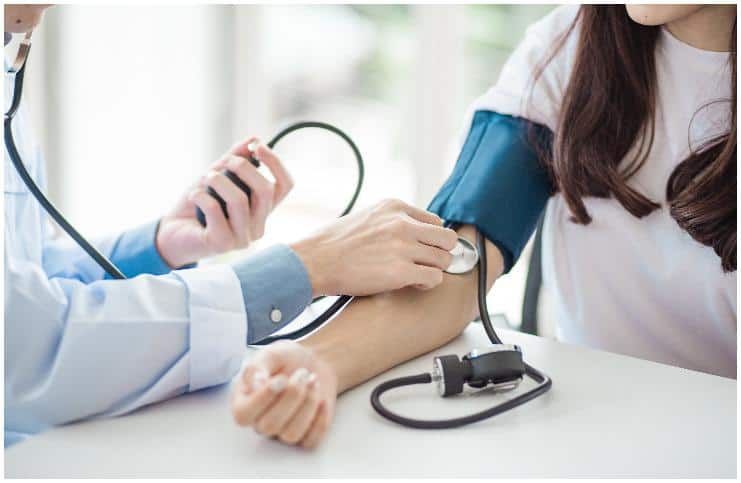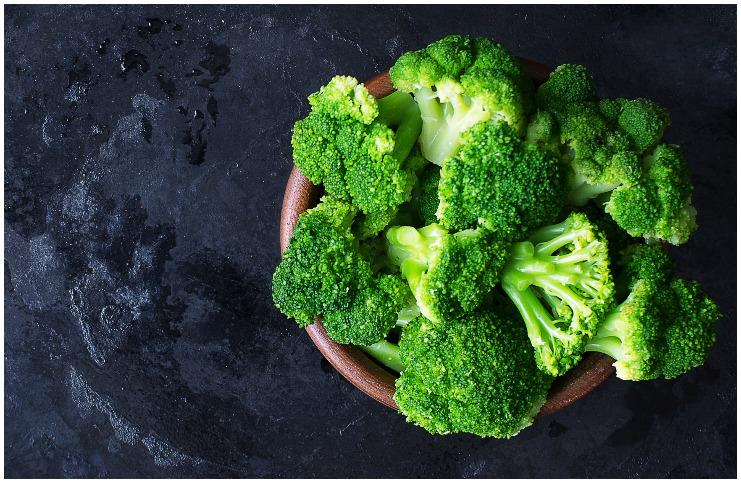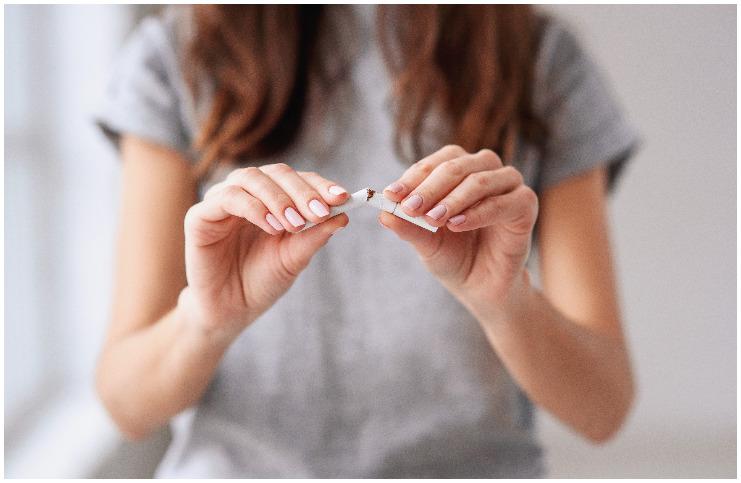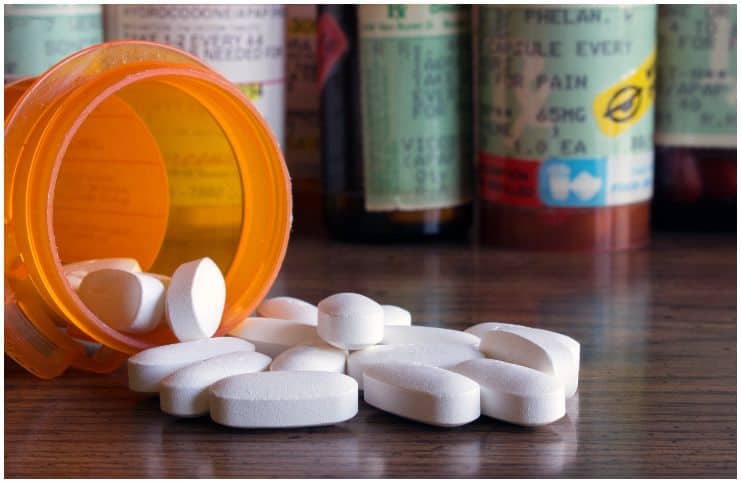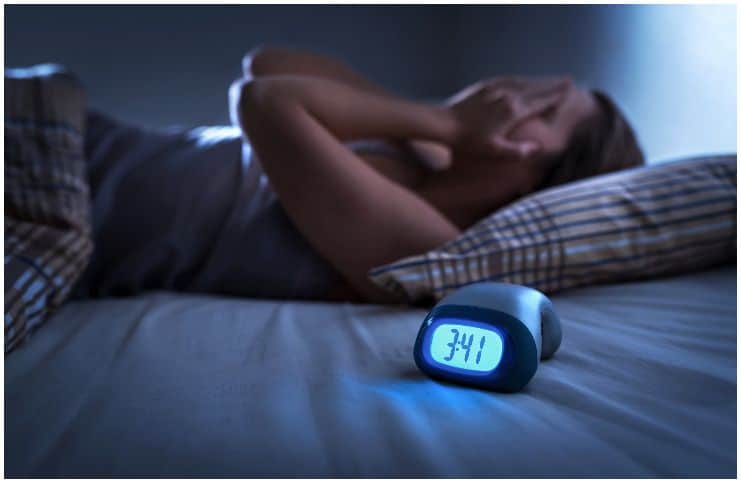What Is Left Atrial Enlargement?
The left atrium is one of the 4 chambers of the heart, the other three being the right ventricle, left ventricle, and the right atrium.
It has a thin-walled structure that accedes blood to return to the heart.
This atrium receives blood high in oxygen and low in carbon dioxide from the right and left pulmonary veins, which pumps to the left ventricle for pumping out through the aorta for systemic circulation.
When the left atrium becomes thick and swollen, this condition is known as left atrial dilation or left atrial enlargement.
According to studies, the presence of left atrial enlargement (LAE) indicates a clinically considerable risk of adverse cardiovascular outcomes for the individual, specifically LAE has been shown to predict ischemic stroke in patients, without mitral valve disease and atrial fibrillation.
The latest research also emphasizes the important relationship between stroke risk and lifestyle factors.
Women and men who follow these five lifestyle behaviors (having a healthy diet – focused on plants, not smoking, getting at least 30 minutes per day of moderate physical exercise, consuming no more than one alcoholic drink per day, and having an optimal body mass index) have an 80 percent lower risk of a stroke as compared with individuals not following these behaviors.
Symptoms
You may experience no symptoms or signs, particularly during the early stages of this condition.
Symptoms and signs include:
- severe fatigue during or after physical exercise;
- extreme tiredness in general;
- chest pain, difficulty breathing, especially when lying down;
- urination more than usual at night;
- excessive coughing at night;
- abnormal heartbeat and hypertension;
- swelling in the legs or ankles.
Diagnosis
To confirm this condition, a cardiac ultrasound exam (echocardiogram uses sound waves to look at the shape, size, and motion of the heart) is the best method to make the diagnosis by measuring the chamber’s size.
However, this test is somewhat tricky if the abnormality is only mild.
Causes
The severity of LAE can vary depending on the extent of the overall conditions.
Causes of this condition include:
- the most frequent cause of any atrial enlargement is hypertension. Additionally, due to the fact that high blood pressure makes the heart work harder, it can be very strenuous for the heart. As a side effect, this excessive strain on the heart leads to a thickening of the walls of the left ventricle. As a side note, most of the symptoms and signs of hypertension are “silent,” that is most individuals do not feel any adverse effects of blood pressure that is elevated.
- obesity in another important risk factor for LAE and hypertension.
- atrial fibrillation – is an abnormal heart rhythm that can lead to heart failure, stroke, blood clots, and other heart-related complications.
- valvular heart disease: aortic regurgitation (leakage of the aortic valve each time the left ventricle relaxes), aortic stenosis (a narrowing of the aortic valve opening which obstructs blood flow from your heart into your aorta), and mitral stenosis (obstruction to left ventricular inflow at the level of mitral valve which results in less blood flows to the body).
- thyroid disorders – both an overactive thyroid gland (hyperthyroidism) and an underactive thyroid gland (hypothyroidism) can lead to heart problems.
Treatment
In order to ease the symptoms of LAE, it is imperative to lower your blood pressure. Prescriptions medications that are usually prescribed to treat hypertension are ACE-inhibitors and beta-blockers.
Natural Ways To Treat High Blood Pressure
According to the CDC – Centers for Disease Control and Prevention, hypertension is “the 2nd greatest public health threat” in the United States, with more than 78 million adults have it.
Estimates are that between one-half to one-fourth of the individuals in the U.S. have hypertension, hence, they are at an increased risk of suffering from a heart attack, a stroke, or sudden death.
Worldwide, hypertension is estimated to cause about 7.5 million deaths which is approximately 12.8 percent of the total of all deaths. Here are some easy methods to lower your high blood pressure:
Plant-Based Diet
An impressive number of researchers, dating back to the early 1920s, concluded that complete vegetarians (no meat, dairy, or eggs) have a lower blood pressure than nonvegetarians.
Actually, according to some studies, adding a small quantity of meat to a plant-based diet raises hypertension levels rapidly and considerably. One reason is that most plants have no saturated fats and cholesterol.
For instance, according to the Adventist Health Study-2 (AHS-2), lacto-ovo vegetarians and vegans had notably lower diastolic and systolic blood pressure, when compared to non-vegetarians.
According to AHA – American Heart Association, consuming saturated fats increases the amount of LDL (bad) cholesterol in your blood, which in turn raises your risk of stroke and heart disease.
Plants are also high in potassium and magnesium, which are two important minerals in regulating blood pressure.
Eat Fiber-Rich Foods
In the US, the daily intake of dietary fiber is around 15 g, which is only fifty percent of the amount recommended by the AHA.
According to a 2005 study issued in the Journal of Hypertension, dietary fiber was linked with a notable reduction in systolic and diastolic blood pressure.
Think whole grains like brown rice, oatmeal, oat bran, whole wheat, quinoa, millet, but also incorporate other high-fiber foods, including fresh fruits like apples, mangos, pineapples, and raspberries, legumes (red kidney beans, navy beans, chickpeas, lentils, lima beans), nuts (almonds and pecans), seeds (flaxseeds, sunflower, pumpkin, and chia) and vegetables (like celery, artichoke, carrots, zucchini, potatoes, sweet potatoes, and broccoli).
Omega-3 Fatty Acids
These fatty acids are vital for overall cardiovascular health. According to studies, increased consumption of foods rich in omega-3s can lower blood pressure naturally.
Also, omega-3s support brain function and reduce chronic inflammation levels in the body. The best source of omega 2 fatty acids are flax seeds.
Physical Exercise
Exercise is one of the best methods you can use to bring your tension to normal levels. Also, regular physical exercise helps you maintain normal body weight, a key factor in controlling blood pressure.
If you’ve been sedentary, cycling is one the easiest ways to reduce your blood pressure. The minimum recommended is 90 minutes of walking every day.
Tip – a 5- to 10-minute warm-up helps prevent injury and helps the body get moving.
Lose Extra Weight
Since 1980, obesity has nearly doubled and current estimates indicate that more than 1.5 billion adults are obese or overweight.
The rise has shown similar upward trends in Europe as well as in the US. Furthermore, in the United Kingdom, 55 percent of women and 66 percent of men and are either obese or overweight.
Weight loss is one of the most effective and important lifestyle changes for controlling hypertension. Losing just 10 pounds can help reduce your blood pressure.
More importantly, this effect is even greater when weight loss is paired with moderate physical exercise.
Drink Less Alcohol

The association between hypertension and alcohol is especially noticeable when alcohol intake is more than 5 drinks a day.
It is thought that this happens because alcohol is an inflammatory agent, this leads to an increase of LDL cholesterol, which, ultimately, leads to hypertension.
Quit Smoking
You probably already know that smoking is bad for your lungs. But, smoking cessation is the single most effective way for the prevention of cardiovascular diseases, including heart disease and hypertension.
This occurs because smoking and exposure to secondhand smoke increase the risk of atherosclerosis (also known as hardening of the arteries).
Note – there are now more than 1.3 billion cigarette smokers worldwide, and it is estimated that during the 21st century, there will be one billion tobacco-related deaths.
Cut She Salt
A little bit is fine, but too much salt (which is 40 percent sodium) disrupts the balance of fluid in the body.
The higher volume of liquid in your circulatory system results in the heart working harder to pump the blood, which ultimately leads to high blood pressure.
The biggest culprit for adding salt to the diets of teens and children is pizza. For example, a single slice of Pizza Hut pepperoni pizza has more than 50% of the recommended daily sodium intake limit.
Moreover, it is recommended to eat more foods that are high in potassium, an essential mineral vital in managing hypertension since this mineral lessens the effects of sodium.
According to studies, the more potassium-rich foods you eat, the more sodium the body loses through urine. Also, potassium reduces the risk of kidney stones and helps in the maintenance of healthy bones.
Good sources of potassium include – sweet potatoes, potatoes, bananas, tomatoes, oranges, red kidney beans, lentils, grapes, chickpeas, raisins, kale, spinach, lemons, limes, hazelnuts, sunflower seeds, tofu, and mangoes.
It is important to have these foods on your regular diet since most people get barely fifty percent of the recommended amount of potassium.
Practice Meditation Daily
Meditation and other relaxation techniques, such as tai chi and yoga, lowers the stress hormones in the physical body that elevate renin, a kidney enzyme (and also, possibly, by the placenta) which increases blood pressure.
This happens because when we meditate (or practice any relaxation method), our stress levels fall notably, and all systems within the human body start to normalize. The outcome is a reduction in blood pressure.
Drugs
The use of some over-the-counter medicines, like those containing ephedra, licorice root, kola nut, guarana, ginseng, yerba mate, and Yohimbe can lead to high blood pressure.
Also, the use of prescription drugs, including – birth control pills, steroids, nonsteroidal anti-inflammatory drugs, decongestants, and diet pills may also raise blood pressure.
Antidepressants can also lead to this condition because they work by changing the human body’s response to brain chemicals, like – norepinephrine, serotonin, and dopamine. Antidepressants which can raise your blood pressure include:
- Fluoxetine (Sarafem or Prozac);
- Tricyclic antidepressants (like clomipramine or trimipramine);
- Monoamine oxidase inhibitors;
- Venlafaxine (Effexor XR).
More importantly, by narrowing the arteries which supply blood to your heart, the use of illegal drugs can raise blood pressure. Illegal drugs which can negatively affect the health of your heart include:
- Cocaine;
- Anabolic steroids;
- Amphetamines.
Avoid Vegetable Oils
Oxidation of vegetable oils by heating leads to blood pressure-increasing effects as well as cancer induction and oxidative changes in cholesterol particles.
Make It A Habit To Get Adequate Sleep
Chronic sleep deprivation (especially individuals who get 5 or fewer hours of sleep every night) and poor sleep quality can also lead to hypertension and other physical problems.
According to research, there is an increased risk of hypertension in individuals who sleep between 5 and 6 hours per night.
In addition, long sleep duration (more than 9 hours per night) is linked with prevalent hypertension compared with people sleeping 7 to 8 hours per night, according to the Sleep Heart Health Study.
References http://www.nature.com/jhh/journal/v21/n11/full/1002236a.html https://thrombosisjournal.biomedcentral.com/articles/10.1186/1477-9560-11-5 http://www.acc.org/about-acc/press-releases/2010/02/22/11/48/9-5 https://www.cardiosmart.org/News-and-Events/ https://www.ncbi.nlm.nih.gov/pubmed/24566947


